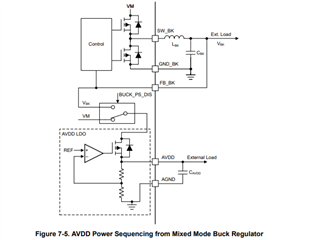I am trying to estimate the power consumption of the processor, driver and associated current sense circuits, for a 3-phase Permanent Magnet Synchronous Motor (with L-L resistance of 2.6 ohms at PWM freq of 25Khz at room temperature).
It look like at 25degC with Cbk = 22 uF:
->in standby mode:
* a Lbk inductor of 47 uH, provides the lowest processor current (Ivms = 10 ma)
* a Rbk resistor value of 22 ohm, provides the highest processor current (Ivms = 27 ma)
->in operate mode with PWM at 25 kHz (no motor connected):
* a Lbk inductor of 47 uH, provides the lowest processor current (Ivms = 14 ma)
* a Rbk resistor value of 22 ohm, provides the highest processor current (Ivms = 30 ma)
With a motor connected as a function of L-L motor phase current, how much power does:
* each of the motor phase current sense inputs consume?
* each of the motor phase current half bridges (is P = Iphase^2*RdsON * 3)?
On page 19 of sllu338.pdf it says:
Only populate one of these options:
47 uH
22 uH
R1 resistor mode
Please verify that this means the BUCK either has 47 uH, 22 uH, or 22 ohms between SW-BK and VBK?
I'd like to reduce PCB space. Is there any way not to use any BUCK components?



